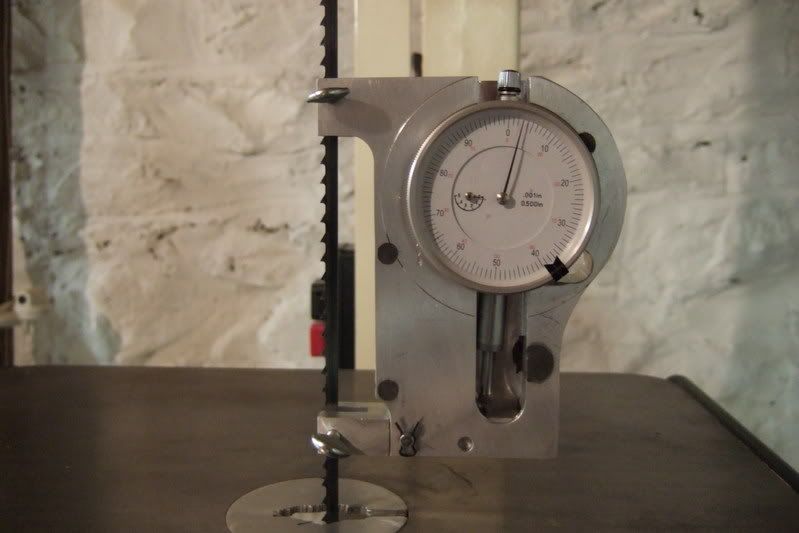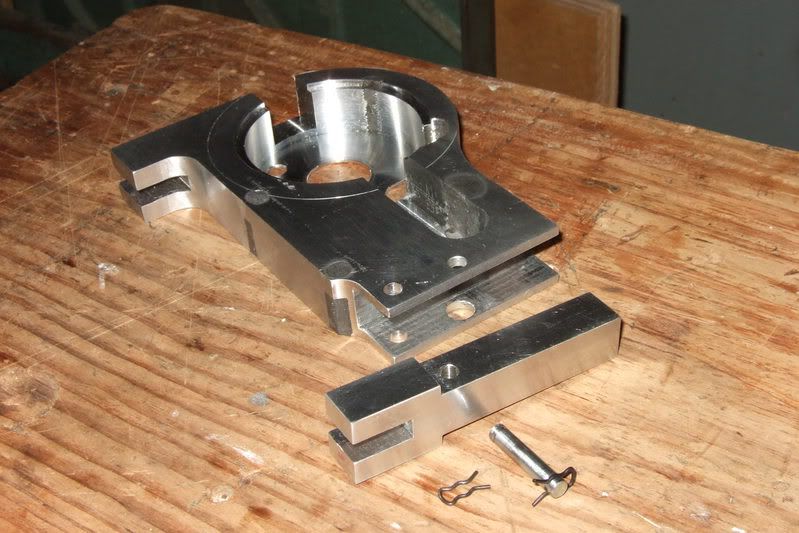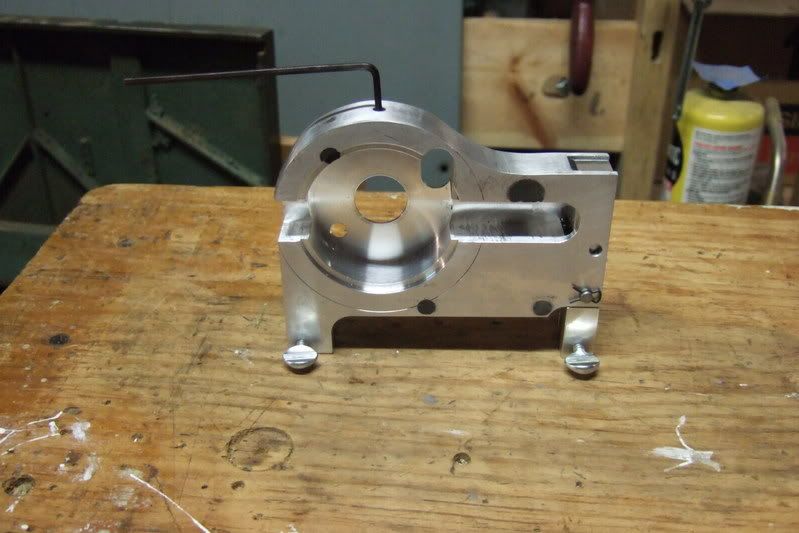Mike Green
Aluminum
- Joined
- Sep 18, 2005
- Location
- Lowell Ma.
Hi everyone, Just finished my latest project, a band saw blade tension gauge based on a Starrett gauge. I printed a picture of one and cut it out to use as a model. Mine uses a .001" cheap dial indicator, so the scap piece of aluminum I used to mill body of the gauge needed to be modified to house the indicator. The Starrett gauge uses an indicator that reads directly in tension, and appropriatly so, list price $340.00 US dollars. A friend recently read an article, relating to a woodworking bandsaw about a home made tension gauge made from a couple sticks of wood, steel pins, some clamps, and some feeler gauges. In the article it stated that on a .025" thick blade, a .001" stretch in 5.0" length equates to 6000 psi tension. Not sure how to verify this, so I just assumed it to be correct. Using a second dial indicator, I have determined that a .001" movement on the pivoting leg on my gauge at the blade clamping thumb screw, causes a .001" deflection of the needle on the dial indicator housed in the body of the gauge, which is a one to one ratio. Next, I need to find out what the proper tension should be on say, a .025" x 3/8" wide blade, or any other blade for that matter. I'm hoping that this will turn out to be a usefull instrument for my friend. It sure was a fun project to make. Could anyone confirm any of these figures? Any comments would be welcome. Thanks Mike Green

[ 11-04-2006, 11:40 AM: Message edited by: Mike Green ]

[ 11-04-2006, 11:40 AM: Message edited by: Mike Green ]






